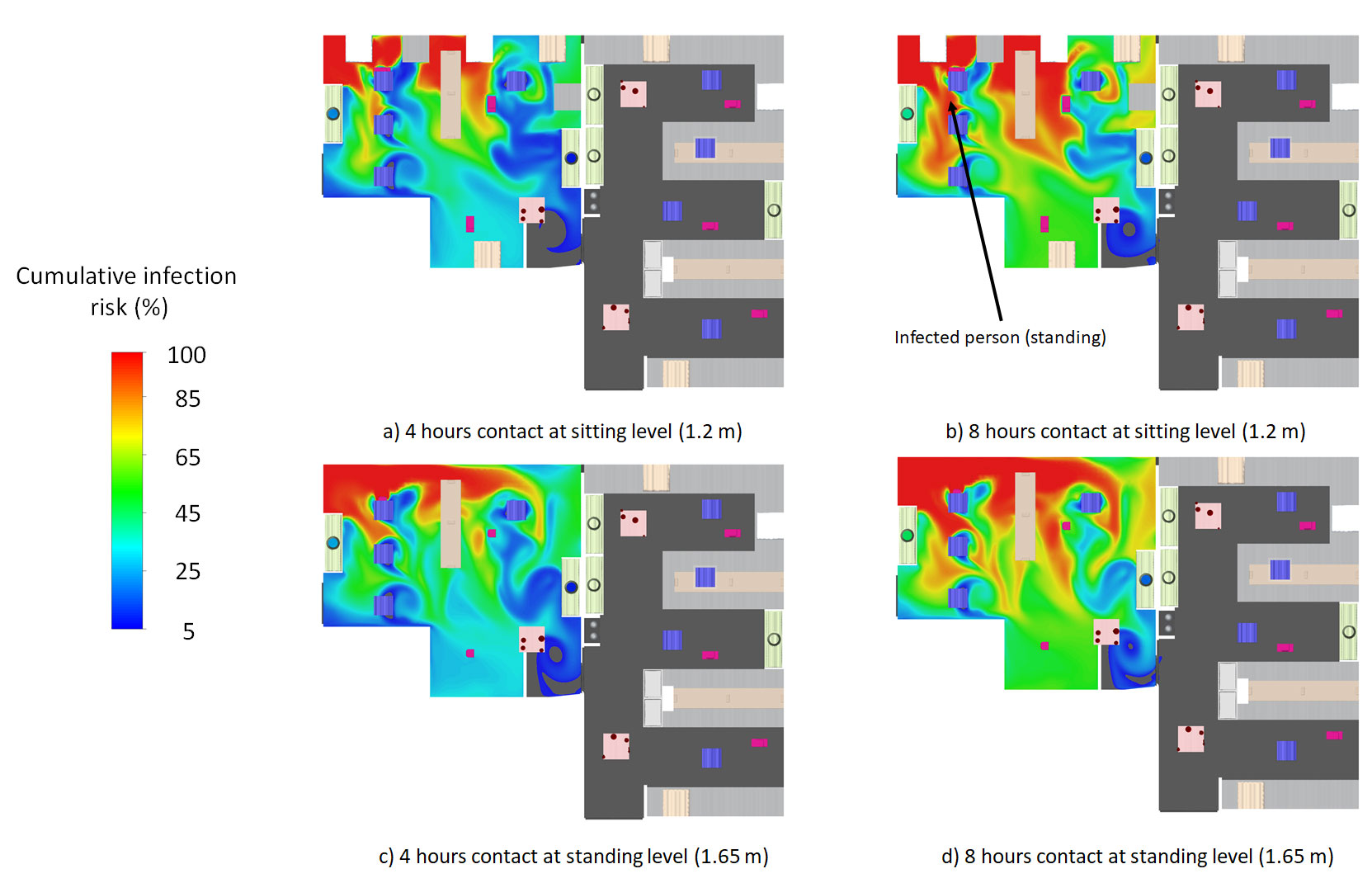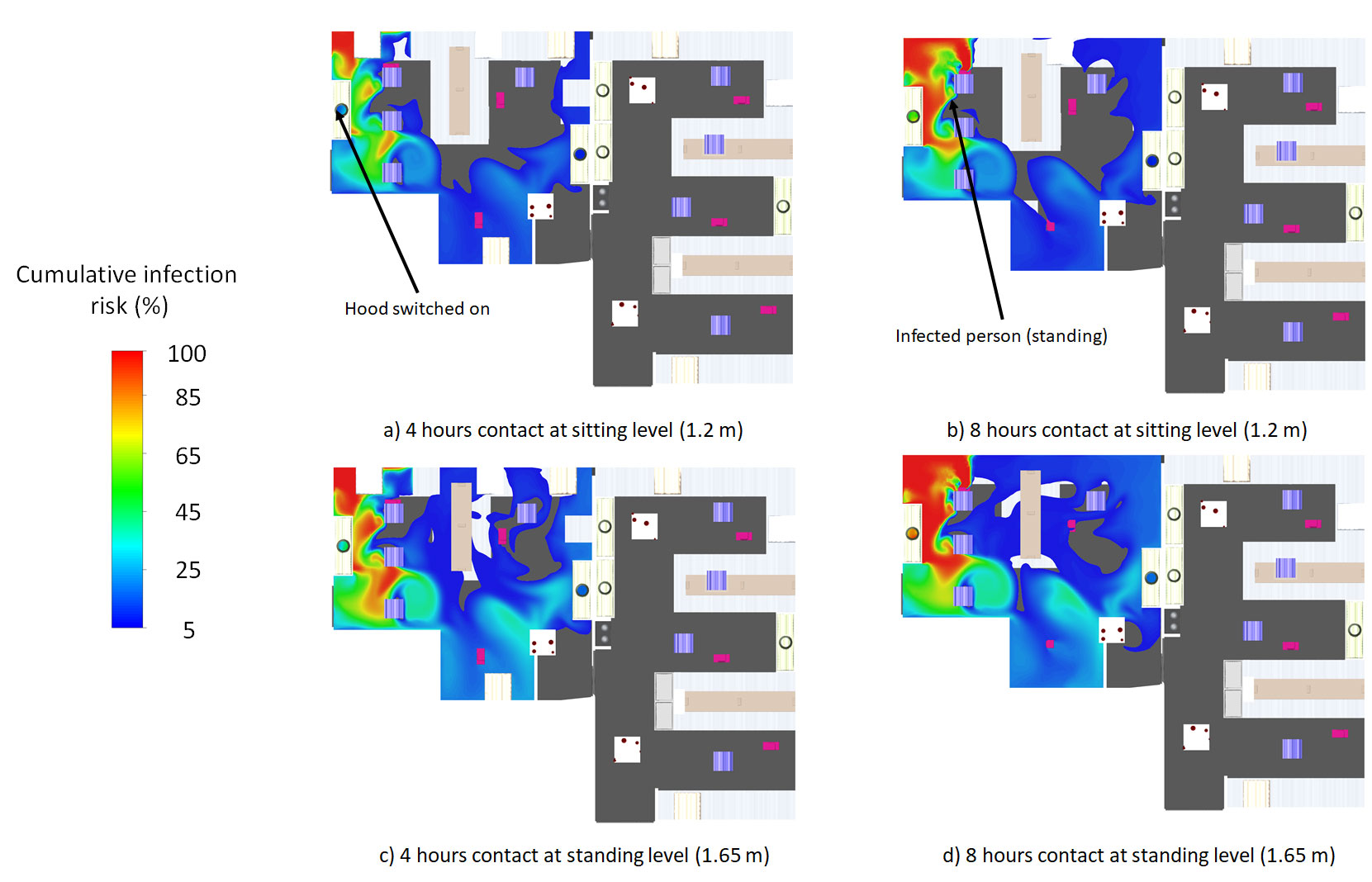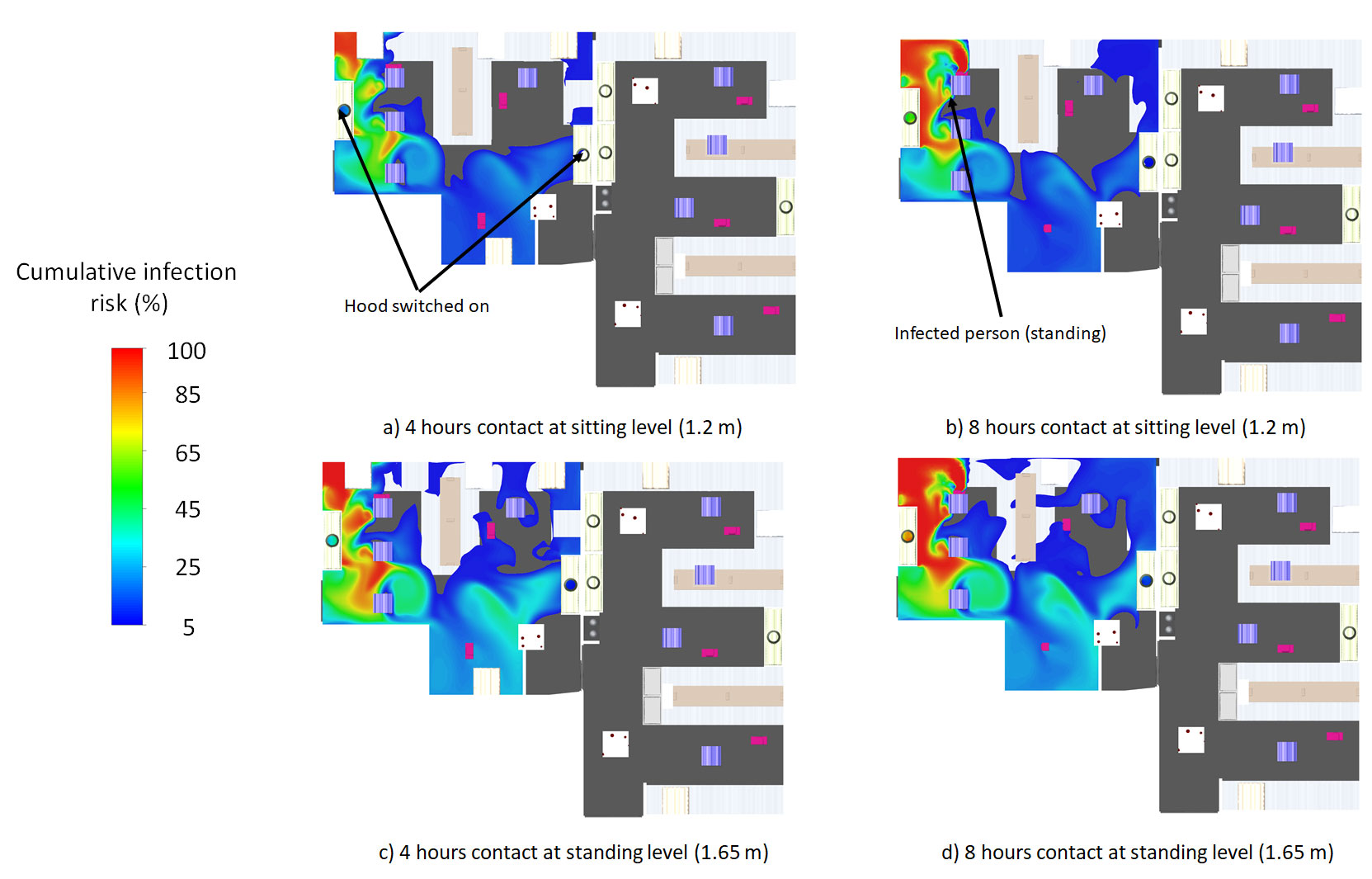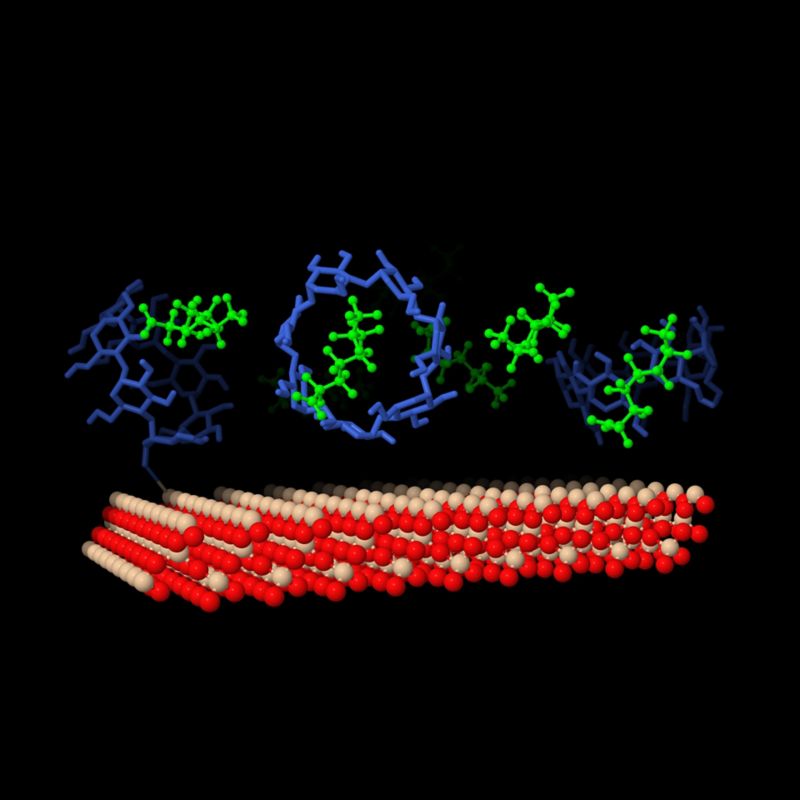Dr David Rodriguez-Sanchez
Dr Rodriguez-Sanchez is a modeller of engineering systems with extensive experience in CFD and ray-tracing simulations. His research is focused on modelling of solar thermal energy systems and heat transfer applications such as characterisation of heat exchangers for non-conventional fluids.
Currently, he is working on the experimental validation & application of multiphysics CFD models to predict the transmission risk of COVID-19 in indoor workplaces in Australia. These models combine an experimental setup with a CFD model to confirm the reliability of the CFD models at predicting the accumulation of SARS-COV-2 aerosol particles in localised regions of the workplace nearby infected occupants, and therefore the cumulative infection risk to nearby susceptible occupants. This validated model will allow the testing of different preventive actions virtually/in silico with the aim of minimising the cumulative infection risk in workplaces in a rapid, cost-effective, and reliable manner. The below images show the cumulative infection risk predicted within a scientific research laboratory by one worker infected with COVID-19.
Cumulative infection risk
 Figure 1: Two-dimensional cumulative probability of risk infection caused by an infected person working at a fixed location for 4 or 8 hours. It is assumed that the person is standing and spreading infectious aerosol particles from a 1.65 m height. The probability of infection is calculated considering the healthy person either sitting (1.2 m) or standing (1.65 m). Risk is calculated based on the assumption than neither the infected nor healthy person are wearing a mask or any other risk mitigation measurement. a) Accumulated risk at a height of 1.2 m after 4 hours of exposure. b) Accumulated risk at a height of 1.2 m after 8 hours of exposure. c) Accumulated risk at a height of 1.65 m after 4 hours of exposure. d) Accumulated risk at a height of 1.65 m after 8 hours of exposure
Figure 1: Two-dimensional cumulative probability of risk infection caused by an infected person working at a fixed location for 4 or 8 hours. It is assumed that the person is standing and spreading infectious aerosol particles from a 1.65 m height. The probability of infection is calculated considering the healthy person either sitting (1.2 m) or standing (1.65 m). Risk is calculated based on the assumption than neither the infected nor healthy person are wearing a mask or any other risk mitigation measurement. a) Accumulated risk at a height of 1.2 m after 4 hours of exposure. b) Accumulated risk at a height of 1.2 m after 8 hours of exposure. c) Accumulated risk at a height of 1.65 m after 4 hours of exposure. d) Accumulated risk at a height of 1.65 m after 8 hours of exposure
Cumulative infection risk
 Figure 2: Two-dimensional cumulative probability of risk infection caused by an infected person working at a fixed location for 4 or 8 hours. It is assumed that the person is standing and spreading infectious aerosol particles from a 1.65 m height. The probability of infection is calculated considering the healthy person either sitting (1.2 m) or standing (1.65 m). Risk is calculated based on the assumption than neither the infected nor healthy person are wearing a mask and that the fume hood cabinet is switched on with its door open. a) Accumulated risk at a height of 1.2 m after 4 hours of exposure. b) Accumulated risk at a height of 1.2 m after 8 hours of exposure. c) Accumulated risk at a height of 1.65 m after 4 hours of exposure. d) Accumulated risk at a height of 1.65 m after 8 hours of exposure.
Figure 2: Two-dimensional cumulative probability of risk infection caused by an infected person working at a fixed location for 4 or 8 hours. It is assumed that the person is standing and spreading infectious aerosol particles from a 1.65 m height. The probability of infection is calculated considering the healthy person either sitting (1.2 m) or standing (1.65 m). Risk is calculated based on the assumption than neither the infected nor healthy person are wearing a mask and that the fume hood cabinet is switched on with its door open. a) Accumulated risk at a height of 1.2 m after 4 hours of exposure. b) Accumulated risk at a height of 1.2 m after 8 hours of exposure. c) Accumulated risk at a height of 1.65 m after 4 hours of exposure. d) Accumulated risk at a height of 1.65 m after 8 hours of exposure.
Cumulative infection risk
 Figure 3: Two-dimensional cumulative probability of risk infection caused by an infected person working at a fixed location for 4 or 8 hours. It is assumed that the person is standing and spreading infectious aerosol particles from a 1.65 m height. The probability of infection is calculated considering the healthy person either sitting (1.2 m) or standing (1.65 m). Risk is calculated based on the assumption than neither the infected nor healthy person are wearing a mask and that the two fume hood cabinets at the room are switched on with their doors open. a) Accumulated risk at a height of 1.2 m after 4 hours of exposure. b) Accumulated risk at a height of 1.2 m after 8 hours of exposure. c) Accumulated risk at a height of 1.65 m after 4 hours of exposure. d) Accumulated risk at a height of 1.65 m after 8 hours of exposure.
Figure 3: Two-dimensional cumulative probability of risk infection caused by an infected person working at a fixed location for 4 or 8 hours. It is assumed that the person is standing and spreading infectious aerosol particles from a 1.65 m height. The probability of infection is calculated considering the healthy person either sitting (1.2 m) or standing (1.65 m). Risk is calculated based on the assumption than neither the infected nor healthy person are wearing a mask and that the two fume hood cabinets at the room are switched on with their doors open. a) Accumulated risk at a height of 1.2 m after 4 hours of exposure. b) Accumulated risk at a height of 1.2 m after 8 hours of exposure. c) Accumulated risk at a height of 1.65 m after 4 hours of exposure. d) Accumulated risk at a height of 1.65 m after 8 hours of exposure.

Materials Modelling
Computational fluid dynamics (CFD), fluid-structure interaction (FSI), 3D printing (stereolithography, PolyJet), selective laser melting, modelling process, direct laser metal deposition, fused deposition modelling, object printing